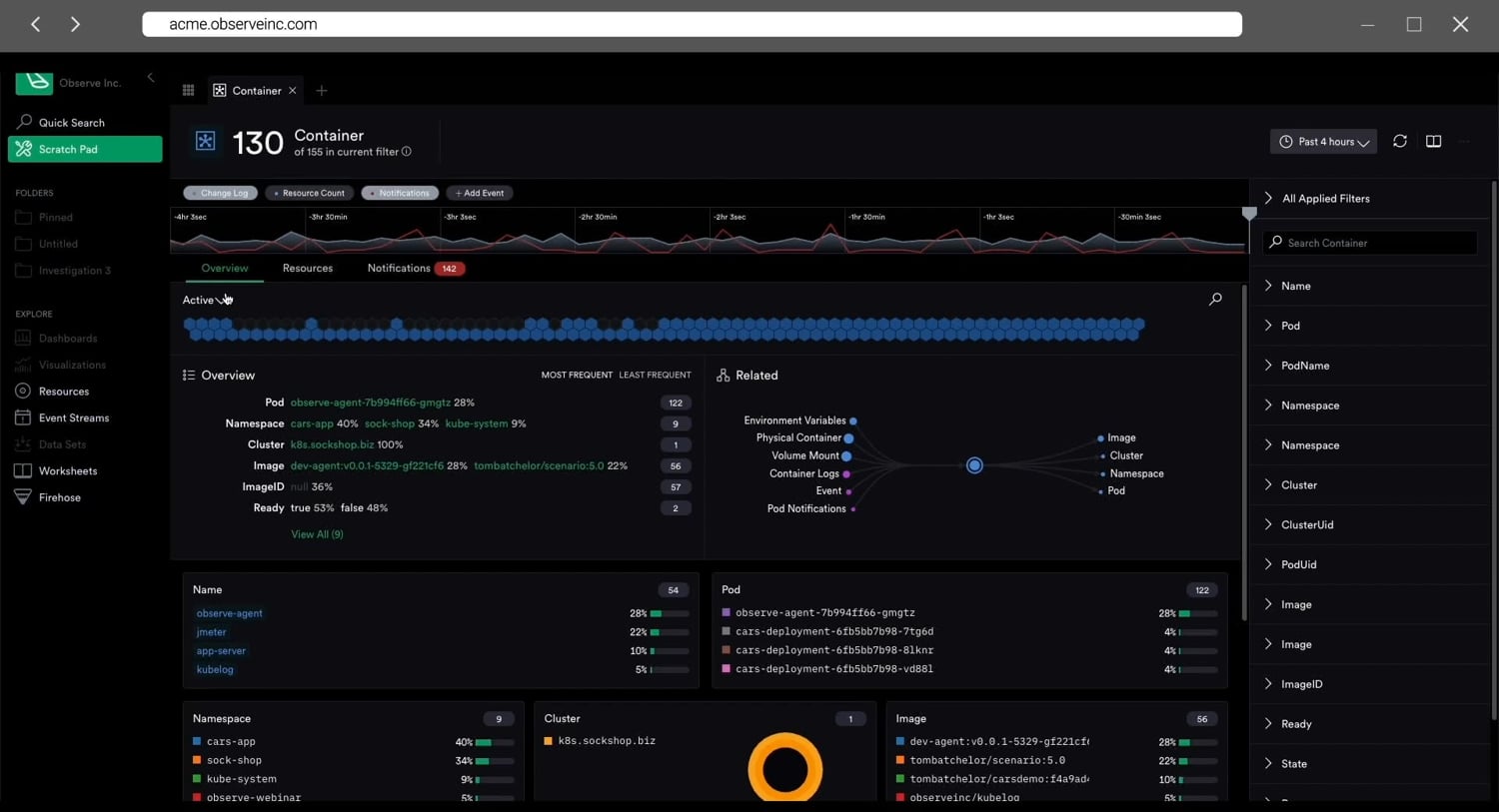 CLOUD
CLOUD
 CLOUD
CLOUD
 CLOUD
CLOUD
An appropriately named startup called Observe Inc. said today it’s getting into the emerging market for observability tools after landing $35 million in a new funding round and debt financing led by Mike Speiser, managing partner at Sutter Hill Ventures.
Famous technology firm executives Michael Dell, Frank Slootman and Scott Dietzen also invested in the Series A round. Speiser is also known for being a founding investor in Snowflake Inc., the cloud data warehouse provider that had a blockbuster initial public offering of stock recently.
Observe is trying to make waves in an emerging observability segment in information technology that involves monitoring apps by pulling data from logs, metrics, traces and events so that operators can identify the root cause of any issues that crop up and resolve them quickly. The company, which was founded in 2017, says these capabilities are needed more than ever because today’s modern software applications have become more distributed, are updated continuously and deployed on cloud-native infrastructure that’s constantly changing.
The problem, according to Observe, is that existing observability tools simply aren’t up to the job. For years, most companies have relied on log analytics, infrastructure monitoring and application performance management tools, but these were all designed to deal with siloed data and do not allow for the ad-hoc exploration of unknown problems, it says. Moreover, they’re expensive, with pricing typically based on the volume of data scanned, and they require considerable expertise to use.
Observe was founded in 2017 to fix this rather miserable state of affairs. It’s led by Chief Executive Jeremy Burton, who has extensive experience in product development and marketing at Dell Technologies Inc., EMC Corp. and Oracle Corp.
The company believes that observability is fundamentally a data problem. Its basic premise is that if you can bring all of the telemetry data from applications together in one place, it will be much easier and faster to detect, investigate and resolve any issues that come up with applications and the infrastructure they run on. Moreover, Observe makes use of technologies such as elastic compute and cloud storage to significantly lower the costs of doing so.
“Finding and resolving issues in today’s modern distributed applications can be a nightmare,” Burton said. “The tools SRE teams are using were designed for a bygone era. Observe’s unique approach brings all this data together and relates it, so users always have context for the problem they are looking at.”
In a blog post, Burton said most traditional monitoring tools present users with an overwhelming array of machine-generated data that very often has no semantics and no meaning. As a result, there’s no logical starting point for someone who’s trying to diagnose the root cause of their application’s problem.
Observe gets around this by curating an application’s telemetry data into specific “resources” grouped around the user, session, a shopping cart, a pod, a container, a help desk ticket and a build. Users can then use Observe’s interface to ask questions about each of these resources, providing a much more logical and recognizable place to start their investigations.
“Moreover, resources can be related – so a help desk ticket can relate to a user, which relates to a session, which relates to container logs and so on,” Burton said. “This means Observe can easily provide all available context for issues being investigated – without resorting to tagging.”
Observe goes further by tracking how each resource’s attributes change over time, so that users can easily reconstitute the state of each application should any irreparable damage occur.
Observe makes its findings easy to understand too. Each “resource” has its own visual dashboard that enables users to explore and troubleshoot problems quickly and easily, and for more experienced users there are “worksheets,” which are spreadsheetlike interfaces that enable more complex, programmatic manipulation of the application data for more detailed investigations.

Observe said its observability platform is built atop Snowflake Inc.’s cloud data warehouse, which can handle tabular relational data, semi-structured and time-series data. Burton explained that this enables Observe to process all types of data in a single data store, helping to keep costs down.
Dave Vellante, chief analyst at Wikibon and co-host of theCUBE, said application monitoring has relied on alerts, logs traces and tribal knowledge for years.
“As such, most organizations lack an understanding of the customer experience because they don’t have a full picture of relevant data,” Vellante said. “User data, application data and infrastructure data are fragmented. Observe transforms, connects and shapes this data so that nontechnical people can understand true user impacts and remediate problems at least 10 times faster than traditional approaches.”
Observe said its platform is currently available via an early access program, with pricing based on the amount of data stored and the amount of data that’s queried by users.
Support our mission to keep content open and free by engaging with theCUBE community. Join theCUBE’s Alumni Trust Network, where technology leaders connect, share intelligence and create opportunities.
Founded by tech visionaries John Furrier and Dave Vellante, SiliconANGLE Media has built a dynamic ecosystem of industry-leading digital media brands that reach 15+ million elite tech professionals. Our new proprietary theCUBE AI Video Cloud is breaking ground in audience interaction, leveraging theCUBEai.com neural network to help technology companies make data-driven decisions and stay at the forefront of industry conversations.